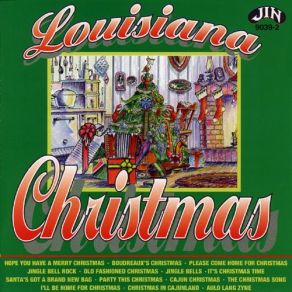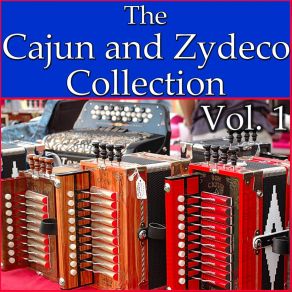Clifton Chenier
Wikimp3 information about the music of Clifton Chenier. On our website we have 46 albums and 70 collections of artist Clifton Chenier. You can find useful information and download songs of this artist. We also know that Clifton Chenier represents Blues genres.
Biography
[Edit]The undisputed "King of Zydeco," Clifton Chenier was the first Creole to be presented a Grammy award on national television. Blending the French and Cajun 2-steps and waltzes of southwest Louisiana with New Orleans R&B, Texas blues, and big-band jazz, Chenier created the modern, dance-inspiring, sounds of zydeco. A flamboyant personality, remembered for his gold tooth and the cape and crown that he wore during concerts, Chenier set the standard for all the zydeco players who have followed in his footsteps. In an interview from Ann Savoy's book, Cajun Music: Reflection of a People, Chenier explained, "Zydeco is rock and French mixed together, you know, like French music and rock with a beat to it. It's the same thing as rock and roll but it's different because I'm singing in French." The son of sharecropper and amateur accordion player, Joe Chenier, and the nephew of a guitarist, fiddler, and dance club owner, Maurice "Big" Chenier, Chenier found his earliest influences in the blues of Muddy Waters, Peetie Wheatstraw, and Lightnin' Hopkins, the New Orleans R&B of Fats Domino and Professor Longhair, the 1920s and '30s recordings by zydeco accordionist Amede Ardoin and the playing of childhood friends Claude Faulk and Jesse and Zozo Reynolds. Acquiring his first accordion from a neighbor, Isaie "Easy" Blasa in 1947, Chenier was taught the basics of the instruments by his father. By 1944, Chenier was performing, with his brother Cleveland on frottoir (rub-board) in the dance halls of Lake Charles.
Moving to New Iberia in the mid-'40s, Chenier worked in the sugar fields cutting sugar cane. After moving, to Port Arthur, TX, in 1947, he divided his time between driving a refinery truck and hauling pipe for Gulf and Texaco and playing with his brother. In 1954, Chenier signed with Elko Records. His first recording session, at Lake Charles radio station KAOK, yielded seven tunes including the regional hit single, "Cliston's Blues" and "Louisiana Stomp."
Chenier's first national attention came with his first single for the Specialty record label, "Ay Tete Fille (Hey, Little Girl)," a cover of a Professor Longhair tune, released in May 1955. The song was one of 12 that he recorded during two sessions produced by Bumps Blackwell, best known for his work with Little Richard. By 1956, Chenier had left his day job to devote his full-time attention to music, Touring with his band, the Zydeco Ramblers, which included blues guitarist Philip Walker. The following year, Chenier left Specialty and signed with the Chess label in Chicago. Although he toured, along with Etta James, throughout the United States, Chenier's career suffered when the popularity of ethnic and regional music styles began to decline. Although he recorded 13 songs for the Crowley, LA-based Zynn label, between 1958 and 1960, none charted.
The turning point in Chenier's career came when Lightnin' Hopkins' wife, who was a cousin, introduced Chris Strachwitz, owner of the roots music label, Arhoolie, to his early recordings. Strachwitz quickly signed Chenier to Arhoolie, producing his first single, "Ay Yi Yi"/"Why Did You Go Last Night?," in four years. Although they continued to work together until the early '70s, Chenier and Strachwitz differed artistically. While Chenier wanted to record commercial-minded R&B, Strachwitz encouraged him to focus on traditional zydeco. Chenier's first album for Arhoolie, Louisiana Blues and Zydeco, featured one side of blues and R&B and one side of French 2-steps and waltzes.
In 1976, Chenier recorded one of his best albums, Bogalusa Boogie, and formed a new group, the Red Hot Louisiana Band, featuring tenor saxophonist "Blind" John Hart and guitarist Paul Senegal.
Chenier reached the peak of his popularity in the '80s. In 1983, he received a Grammy award for his album, I'm Here!, recorded in eight hours in Bogalusa, LA. The following year, he performed at the White House. Although he suffered from kidney disease and a partially amputated foot and was required to undergo dialysis treatment every three days, Chenier continued to perform until one week before his death on December 12, 1987. Following his death, his son, C.J. Chenier, took over leadership of the Red Hot Louisiana Band.
A documentary video of Chenier's performances at the San Francisco Blues Festival, the New Orleans Jazz and Heritage Festival, and on Louisiana television was released by Arhoolie.
Title: King Of Zydeco: The Rhythm And Blues Years 1954-1960 (CD1)
Artist: Clifton Chenier
Genre: Blues
Title: Zydeco Dynamite: The Clifton Chenier Anthology (Disc 2)
Artist: Clifton Chenier
Genre: Blues, World Music, Ethnic , Pop
Title: Zydeco Dynamite: The Clifton Chenier Anthology (Disc 1)
Artist: Clifton Chenier
Genre: Blues, World Music, Pop
Title: King Of Zydeco: The Rhythm And Blues Years 1954-1960 (CD2)
Artist: Clifton Chenier
Genre: Blues
Title: Live! At the Long Beach and San Francisco Blues Festivals
Artist: Clifton Chenier
Genre: World Music
Title: Clifton Chenier And His Red Hot Louisiana Band: Zydeco Blowout
Artist: Clifton Chenier
Genre: Blues
Title: Boogie in Black & White
Artist: Clifton Chenier, Rod Bernard
Genre: Hip Hop/R&B, Soul, Blues, Rock, Rock & Roll, World Music
Title: Frenchin' the Boogie
Artist: Clifton Chenier
Genre: Blues, Jazz, World Music, Songwriter/Lyricist
Title: The Best of Clifton Chenier
Artist: Clifton Chenier
Genre: Hip Hop/R&B, Soul, Blues, World Music, Pop
Title: The Lost Blues Masters Vol. 1
Artist: Johnny Winter, T - Bone Walker, Calvin Johnson, Clifton Chenier, Lightin Hopkins, Billy Biser
Genre: Hip Hop/R&B, Soul, Blues
Collections
Title: The Very Best of American Folk Blues Festival '63 - '85
Genre: Blues
Title: Top 20 Louisiana Blues
Genre: Blues
Title: Blues Roots
Genre: Blues
Title: Happy Blues
Genre: Blues
Title: Rockin' Those Blues Away
Genre: Blues
Title: The Alligator Records 20th Anniversary Collection
Genre: Blues
Title: World Music Essentials
Genre: World Music
Title: 15 Louisiana Zydeco Classics
Genre: World Music
Title: Cajun and Zydeco Mardi Gras
Genre: World Music
Title: World Accordion
Genre: World Music
Title: Rockin' Zydeco Party!
Genre: World Music
Title: 101 Zydeco Proof
Genre: World Music
Title: A Beginners Guide to: Cajun
Genre: World Music
Title: A Beginners Guide to: Cajun
Genre: Country
Title: The Accordion Legends
Genre: World Music
Title: It's Cajun Time!
Genre: World Music
Title: The Best of Cajun and Zydeco
Genre: Country
Title: Dat's Zydeco: The Best "Old-Skool" Zydeco
Genre: World Music
Title: American Folk Blues Festival '69
Genre: Blues
Title: Zydeco Hot Tracks, Vol. 1
Genre: World Music
Title: Zydeco Festival
Genre: World Music
Title: Blues for the Road, Vol. 1
Genre: Blues
Title: The Most Essential Louisiana Blues
Genre: Blues
Title: Big Easy Blues
Genre: Blues
Title: Blues for the Road, Vol. 2
Genre: Blues
Title: J'ai Ete Au Bal - Vol. 2 (I Went to the Dance)
Genre: Latin
Title: Blues: Famous Families
Genre: Blues
Title: Rare Swamp Blues
Genre: Blues
Title: New Orleans to Baton Rouge - Louisiana Blues
Genre: Blues
Title: Bluesy Horns
Genre: Blues
Title: Zydeco Dance Party
Genre: World Music
Title: Zydeco - The Early Years, Vol. 1
Genre: World Music
Title: Zydeco Champs
Genre: World Music
Title: Zydeco Classics
Genre: Pop
Title: Louisiana Christmas
Genre: Traditional Pop Music
Title: East Coast Teen Party - Volume 7
Genre: Pop
Title: Swamp Gold, Vol. 7
Genre: Hip Hop/R&B, Soul
Title: Swamp Gold, Vol. 4
Genre: Hip Hop/R&B, Soul
Title: Rockin R&B Vol. 3
Genre: Hip Hop/R&B, Soul, Pop
Title: Greatest R&B Hits of 1955, Vol. 6
Genre: Hip Hop/R&B, Soul, Pop
Title: Jazz Party in New Orleans
Genre: Kids
Title: The Cajun and Zydeco Collection, Vol. 1
Genre: Country
Title: Mardi Gras Party!
Genre: World Music
Title: Jole Blon & The Cajun Music Story
Genre: Jazz
Title: Golden Louisiana Blues
Genre: Blues
Title: Best of Louisiana Blues
Genre: Blues
Title: The Cajun and Zydeco Collection, Vol. 2
Genre: Country
Title: The Cajun and Zydeco Collection, Vol. 3
Genre: Country
Title: Power Party Polka!
Genre: World Music
Title: Blues Legends in the Blues Hall of Fame
Genre: Blues
Title: Putumayo Presents: Zydeco
Genre: World Music
Title: A Cajun Christmas
Genre: Country
Title: Swampbilly Shindig (CD1)
Genre: Rockabilly
Title: The Rough Guide To Cajun & Zydeco
Genre: World Music
Title: The Rough Guide - Cajun & Zydeco
Genre: World Music
Title: The Rough Guide - Zydeco
Genre: World Music
Title: Dizzy Miss Lizzy: The Speciality Story 54-60 (CD1)
Genre: Jazz, Rock, Rock & Roll, Rockabilly
Title: The Speciality Sound, Vol. 2 (CD2)
Genre: Jazz, Rock, Rock & Roll, Rockabilly
Title: Dizzy Miss Lizzy: The Speciality Story 54-60 (CD3)
Genre: Jazz, Rock, Rock & Roll, Rockabilly
Title: Bluesin' By The Bayou
Genre: Blues
Title: The Chess Story 1947-1975 (CD07)
Genre: Blues
Featuring albums
Title: American Folk Blues Festival '69
Artist: Various Artists
Genre: Hip Hop/R&B, Soul, Blues, World Music, Folk
Title: J'ai Ete Au Bal - Vol. 2 (I Went To The Dance)
Artist: Various Artists
Genre: Blues, World Music, Latin
Title: Putumayo Kids Presents: New Orleans Playground
Artist: Putumayo
Genre: Hip Hop/R&B, Pop, Kids
Title: Classic Delta and Deep South Blues from Smithsonian Folkways
Artist: Various Artists
Genre: Blues













































































































































